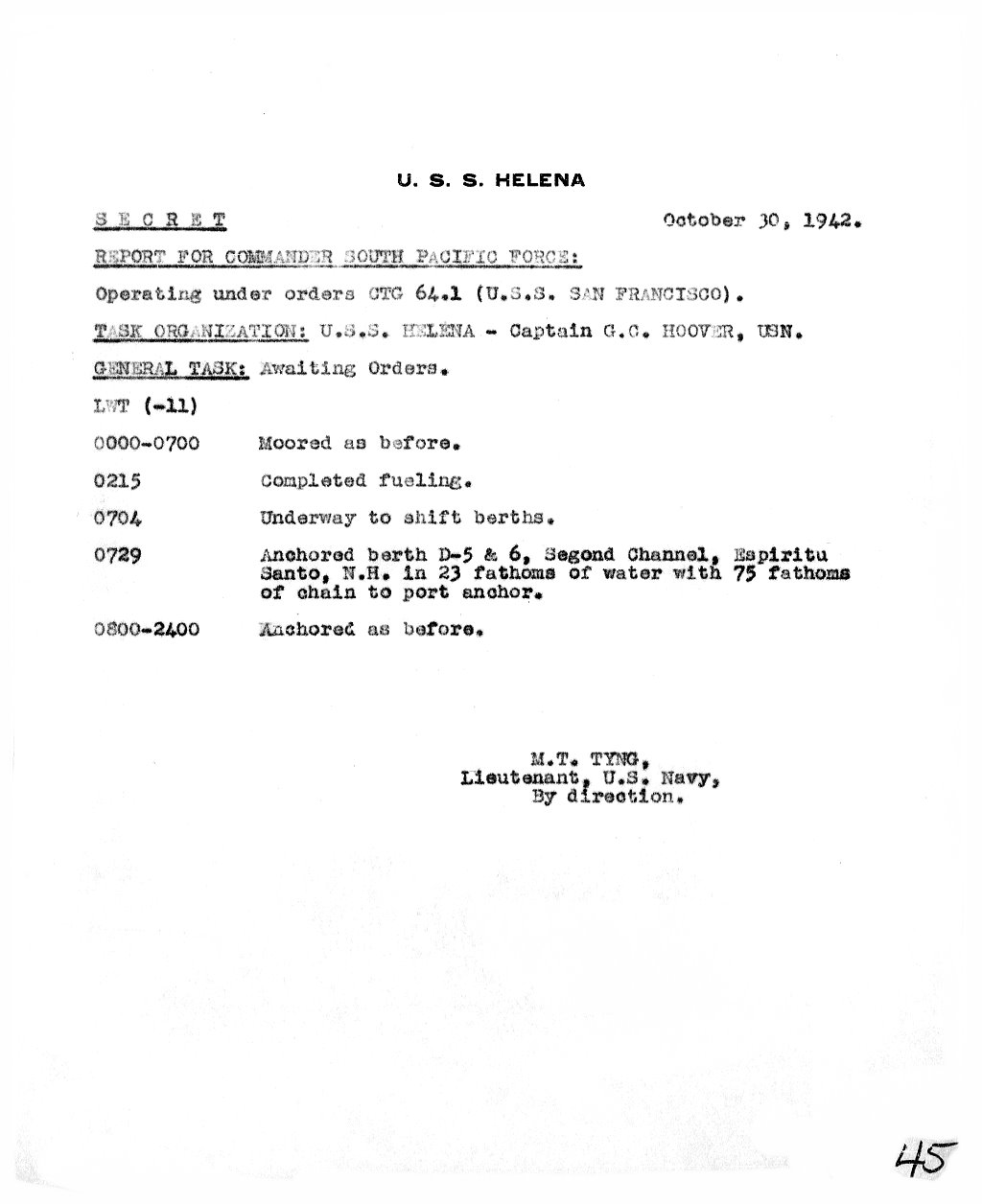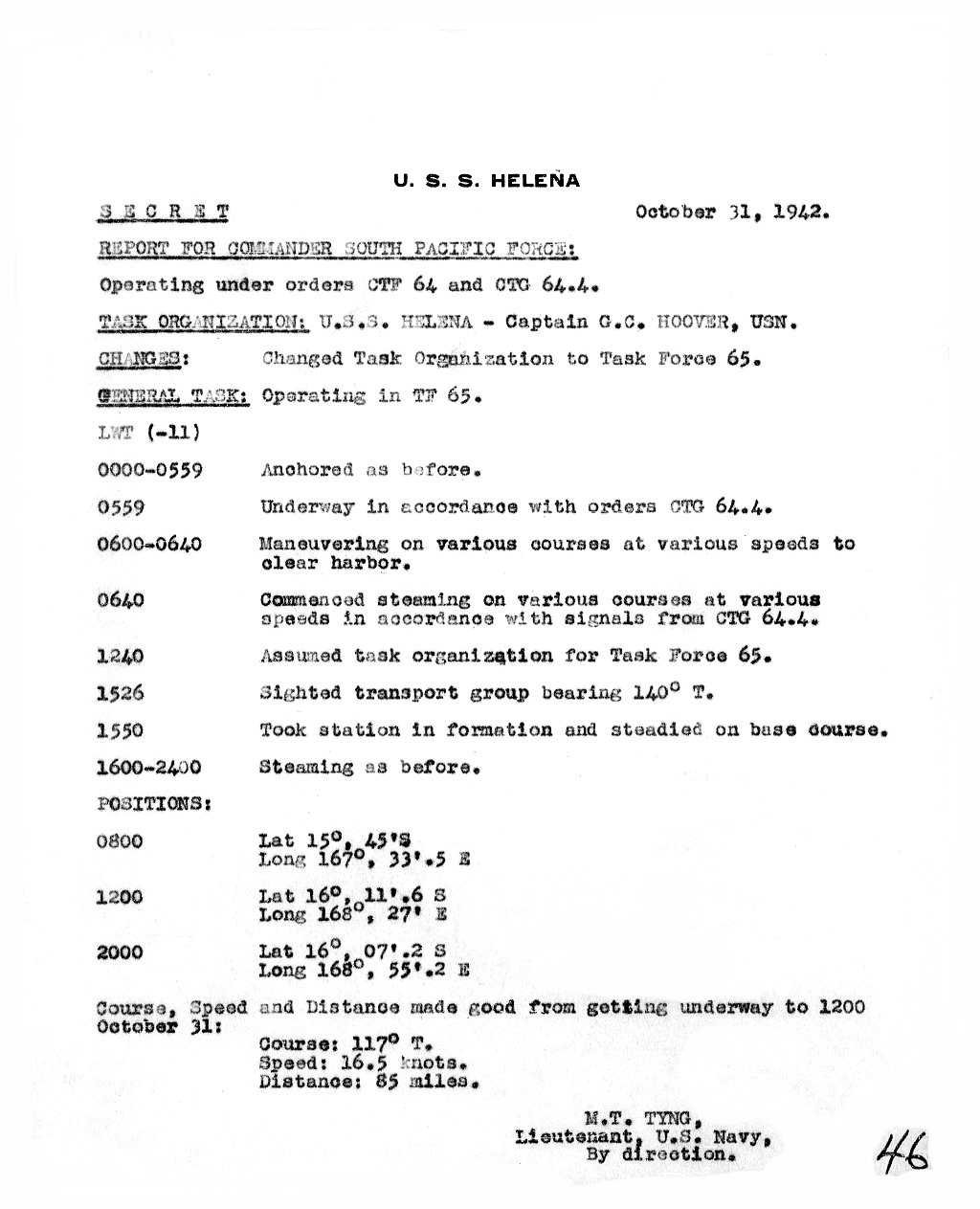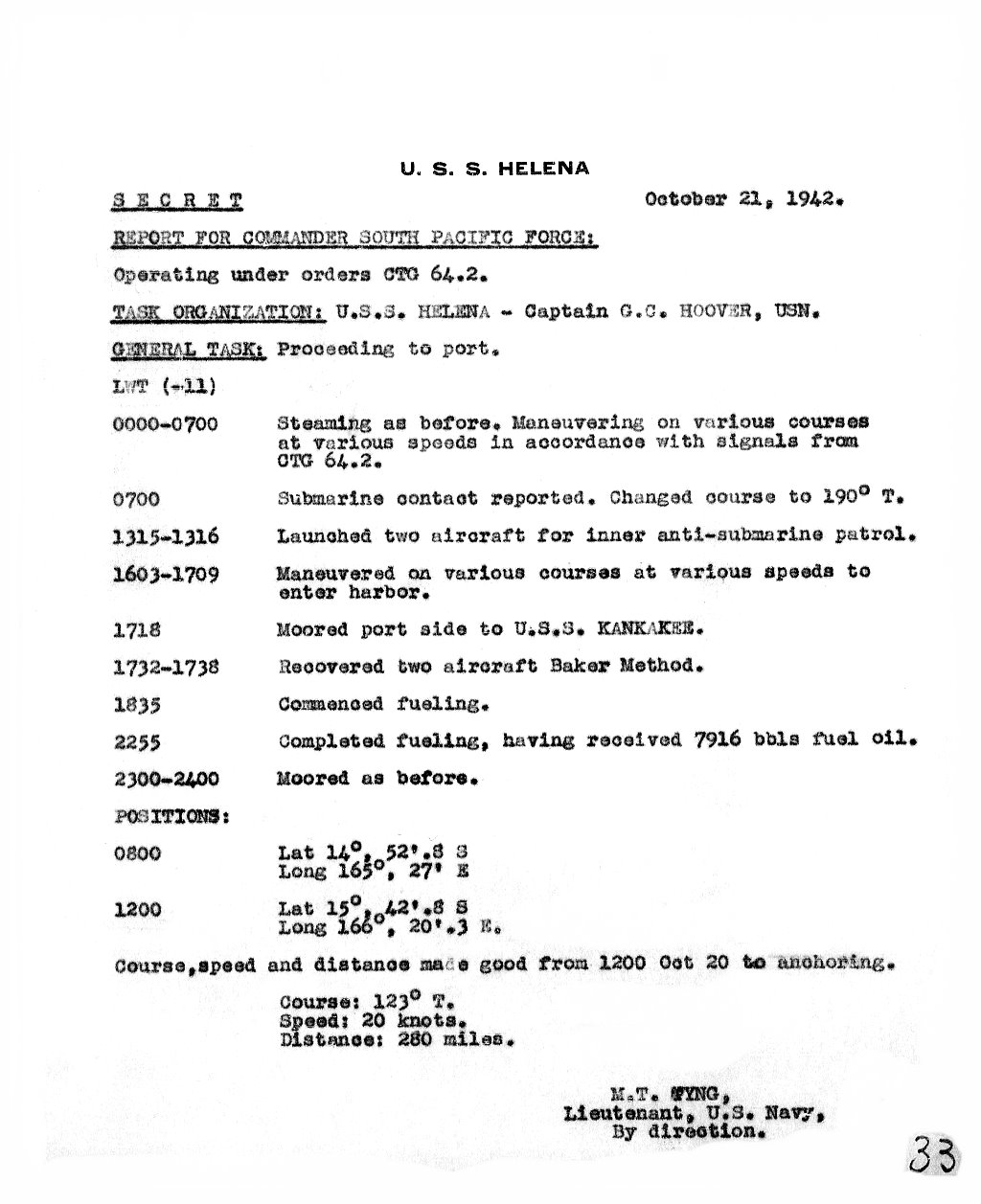


USS Helena War Diary October 1942
Page 3 of 3 pages

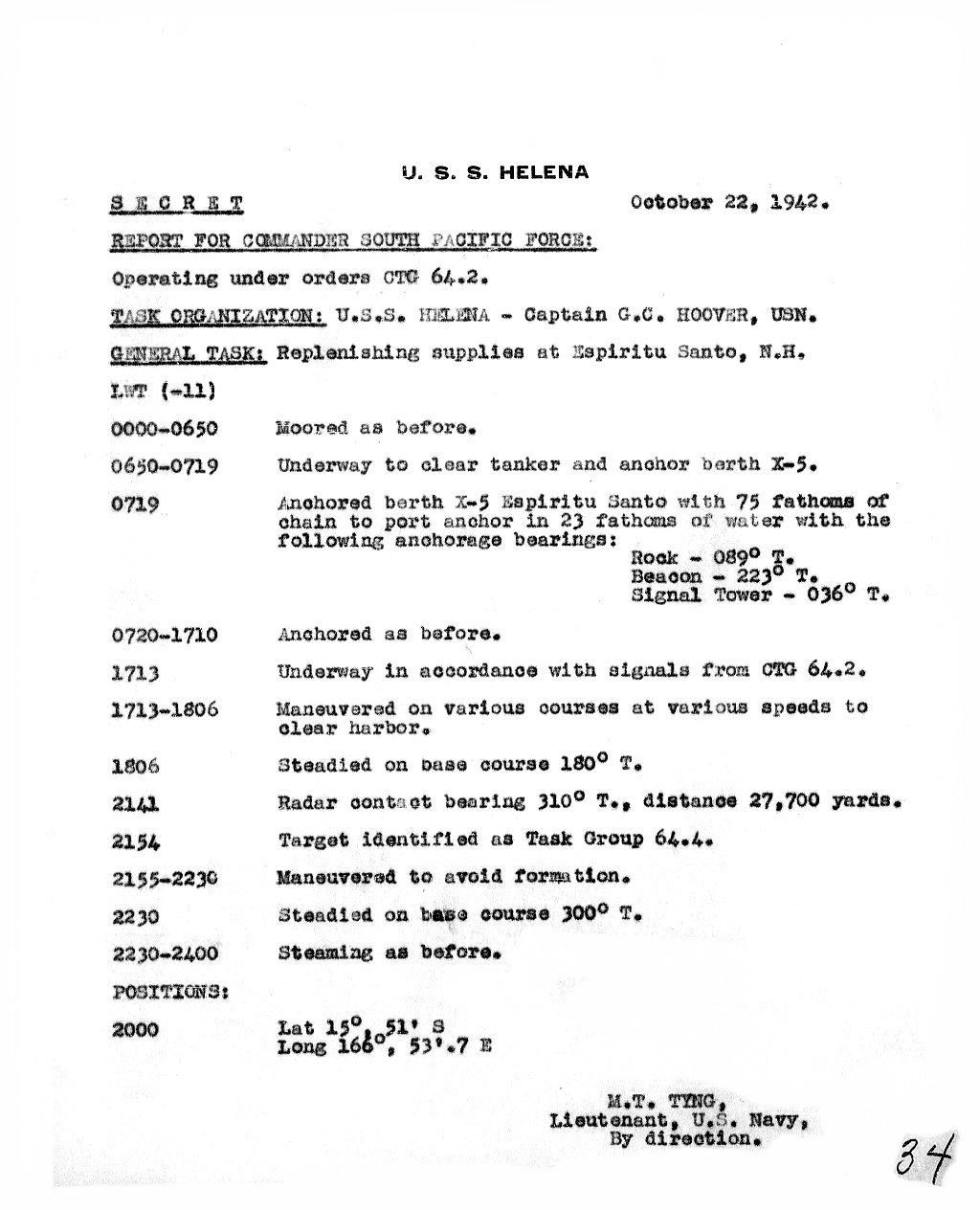
USS Laffey (DD-459) was a Benson-class destroyer in the United States Navy during World War II.
She was lost in action on 13 November 1942.
USS Washington (BB-56), the second of two battleships in the North Carolina class,
As the United States launched its first offensive effort in the Pacific, USS Walke was named in honor of Rear Admiral Henry A. Walke (1809-1896), 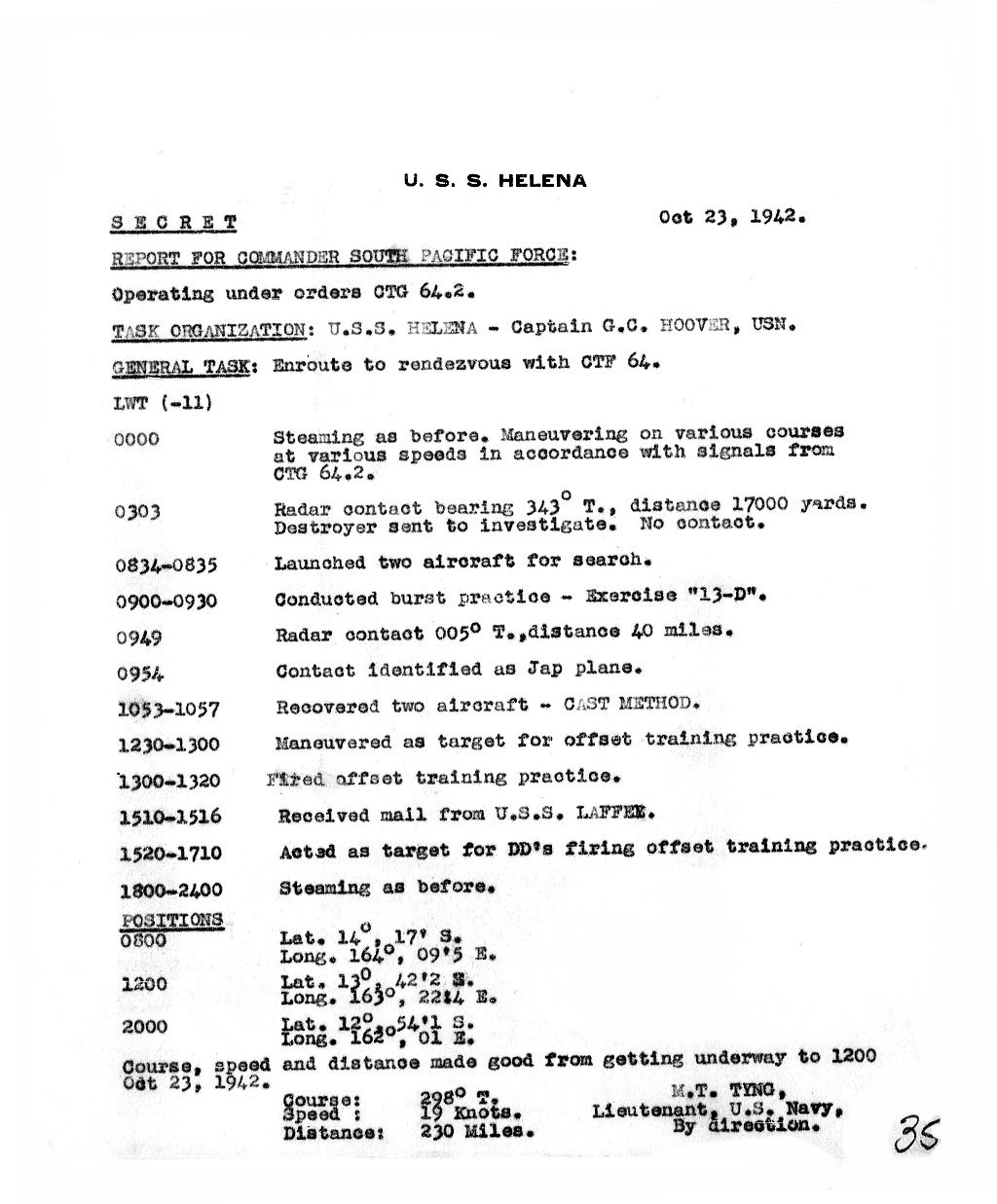
.jpg)
USS Laffee (DD-459)
Laffey saw her first fleet action in the Battle of Cape Esperance
(also known as the Second Battle of Savo Island) on 11 and 12 October 1942.
The destroyer operated with Admiral Norman Scott cruiser group,
guarding against enemy attempts to reinforce Guadalcanal.
On 11 October, when the group formed into single column, Laffey joined two other destroyers in the van.
About an hour later, sailors ran to their battle stations, steel doors clanged shut, and all made ready for battle.
When the engagement began, Laffey raked the Japanese cruiser Aoba with three of her 5-inch guns.
The furious gunfire roared on through the night. At dawn, destroyer Duncan was sinking,
Farenholt was badly damaged, and cruiser Boise , though hard hit, had weathered several powerful blows.
On the other hand, the Japanese losses were even greater.
Japanese cruiser Furutaka was sinking, Aoba was badly damaged, and Japanese destroyer Fubuki had sunk.
She was the first destroyer named for Bartlett Laffey .
Laffey was laid down on 13 January 1941 by Bethlehem Shipbuilding Company, San Francisco, California;
launched 30 October 1941; sponsored by Miss Eleanor G. Forgerty, granddaughter of Seaman Laffey;
and commissioned on 31 March 1942, Lieutenant Commander William E. Hank in command.
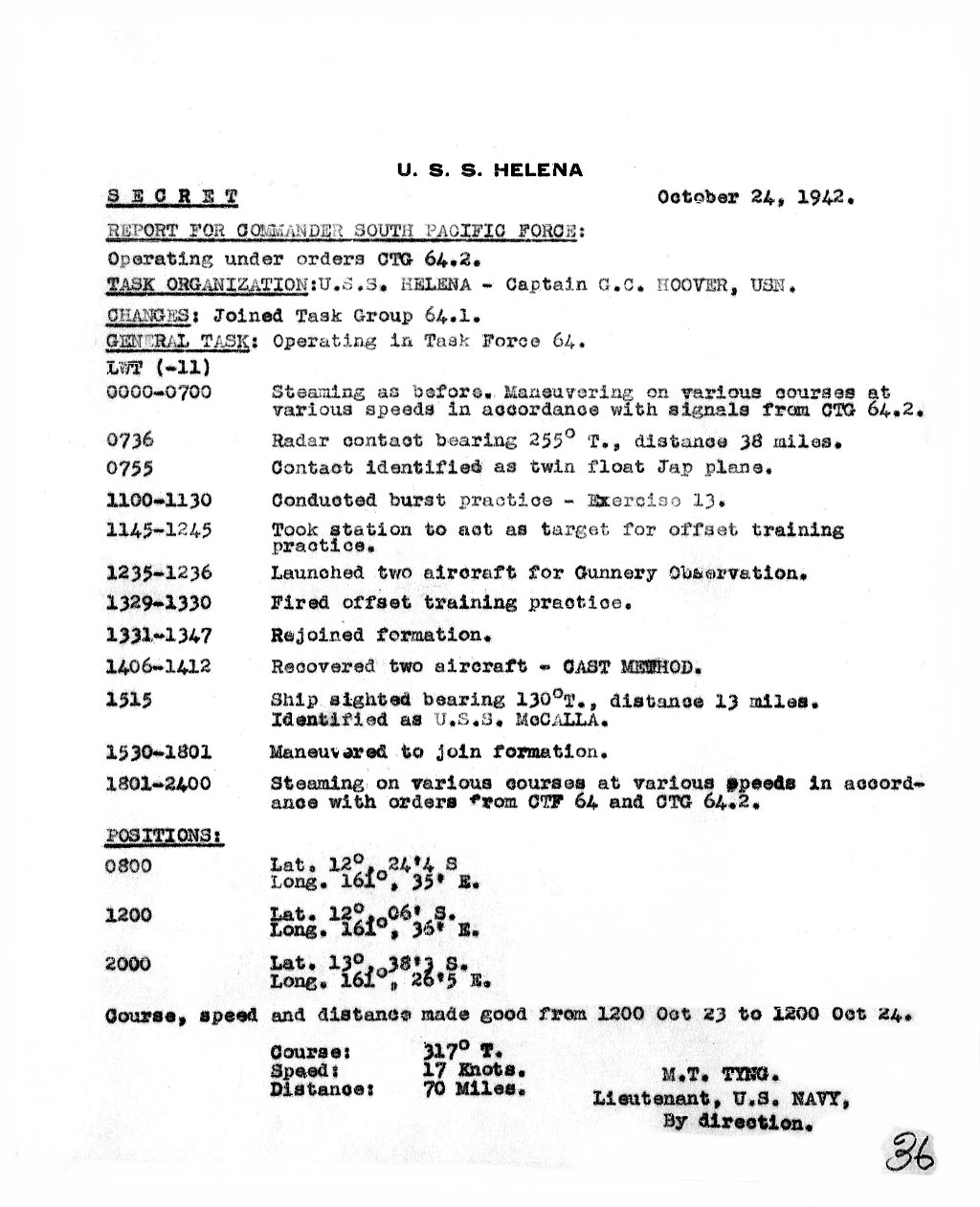
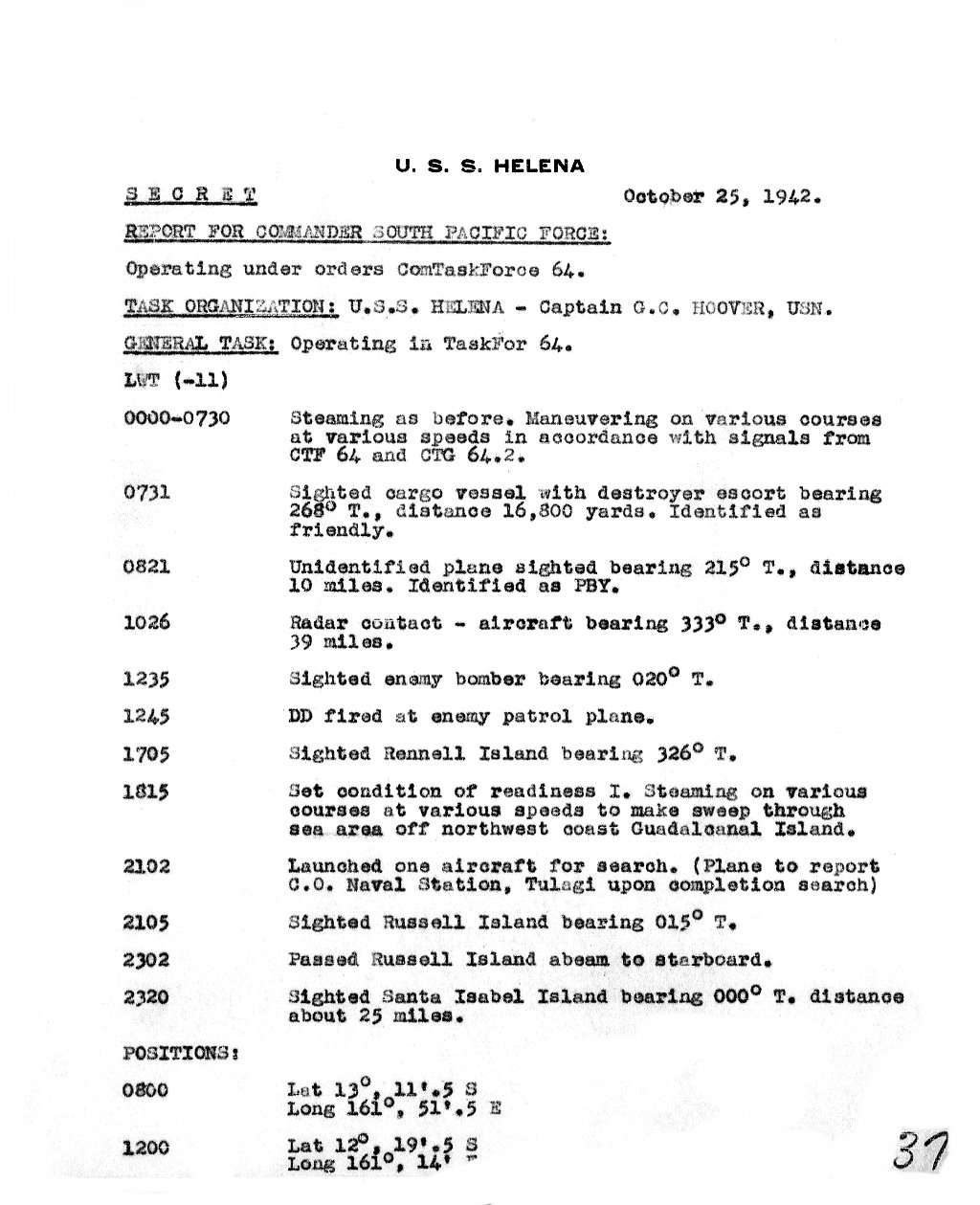
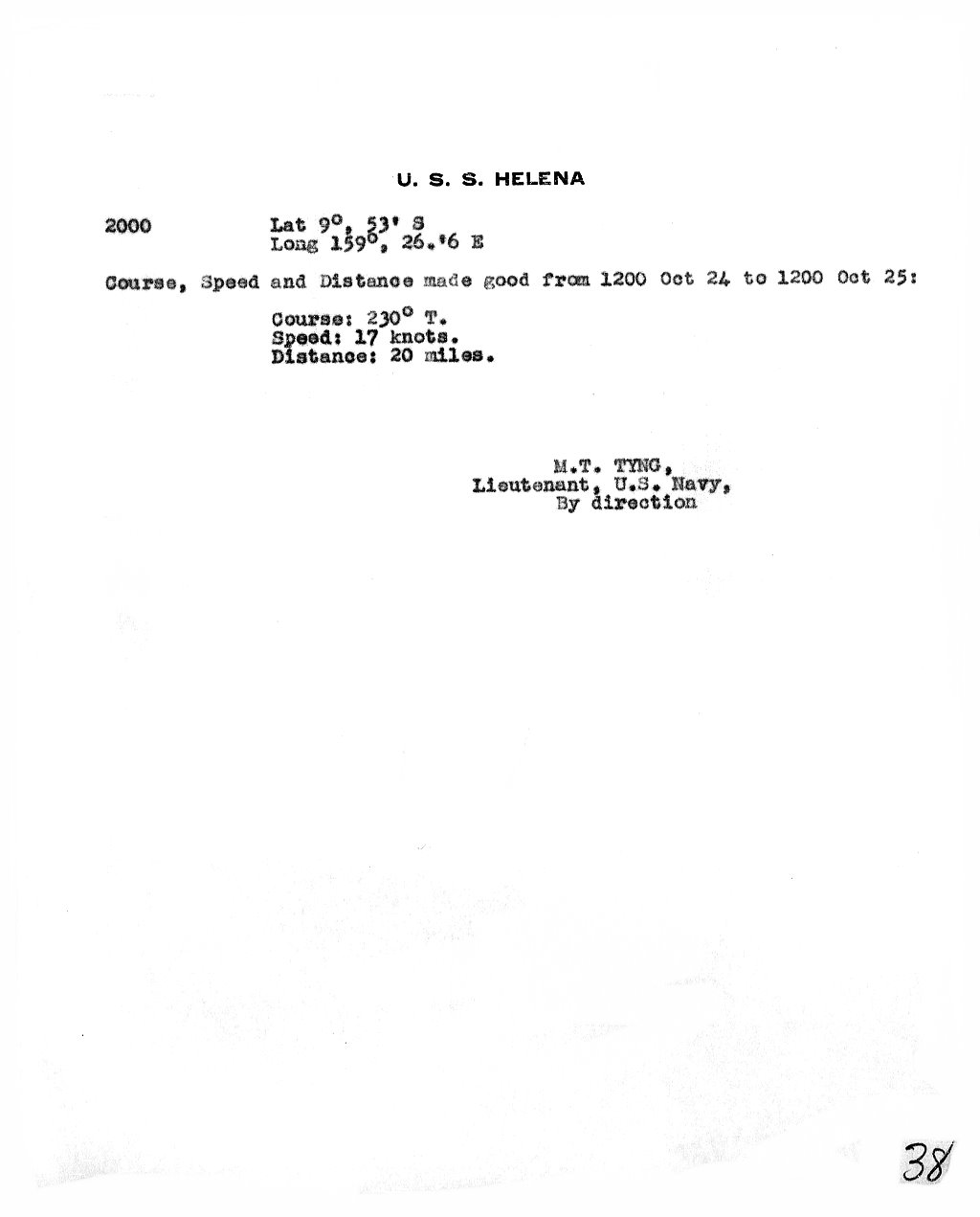
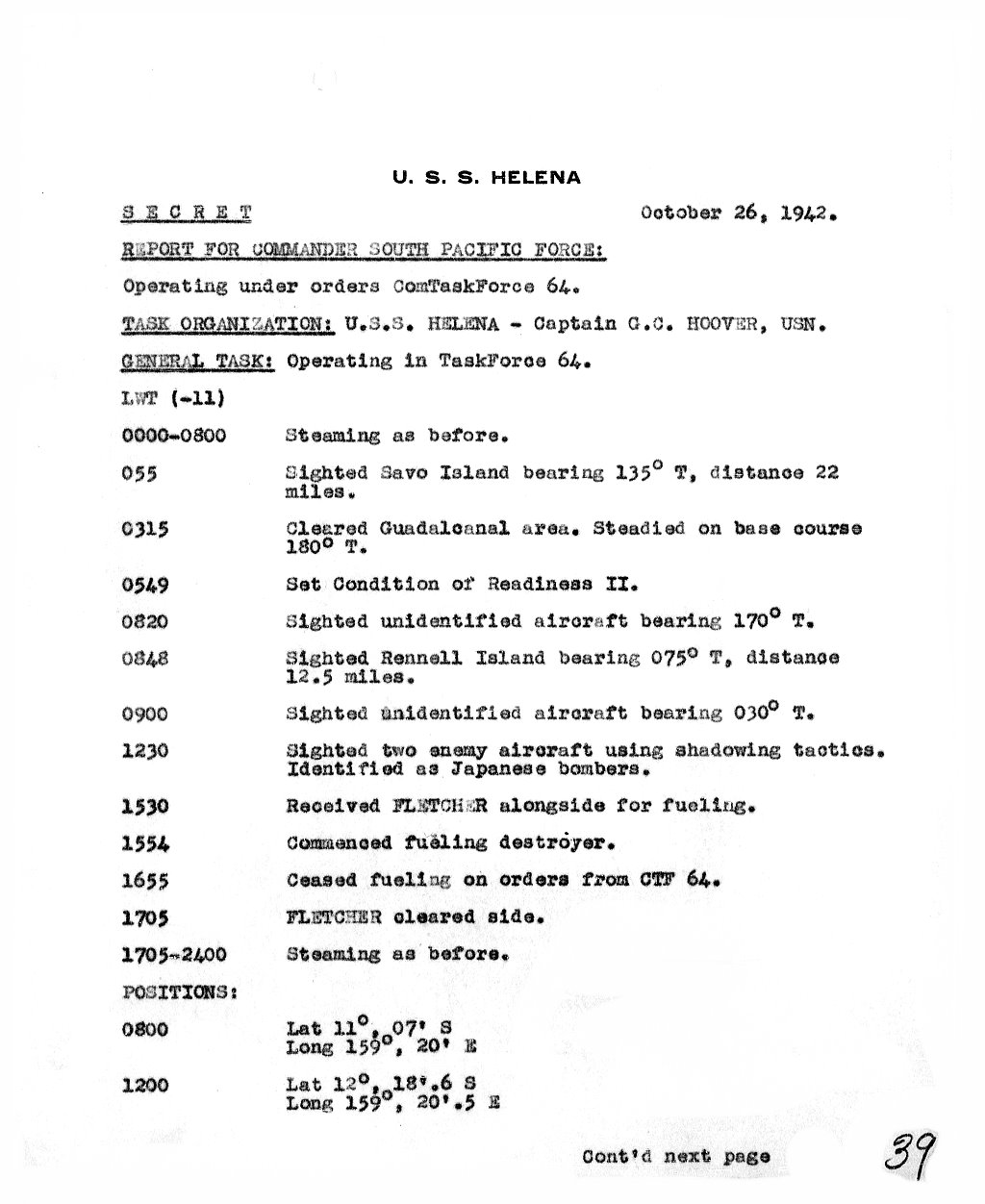
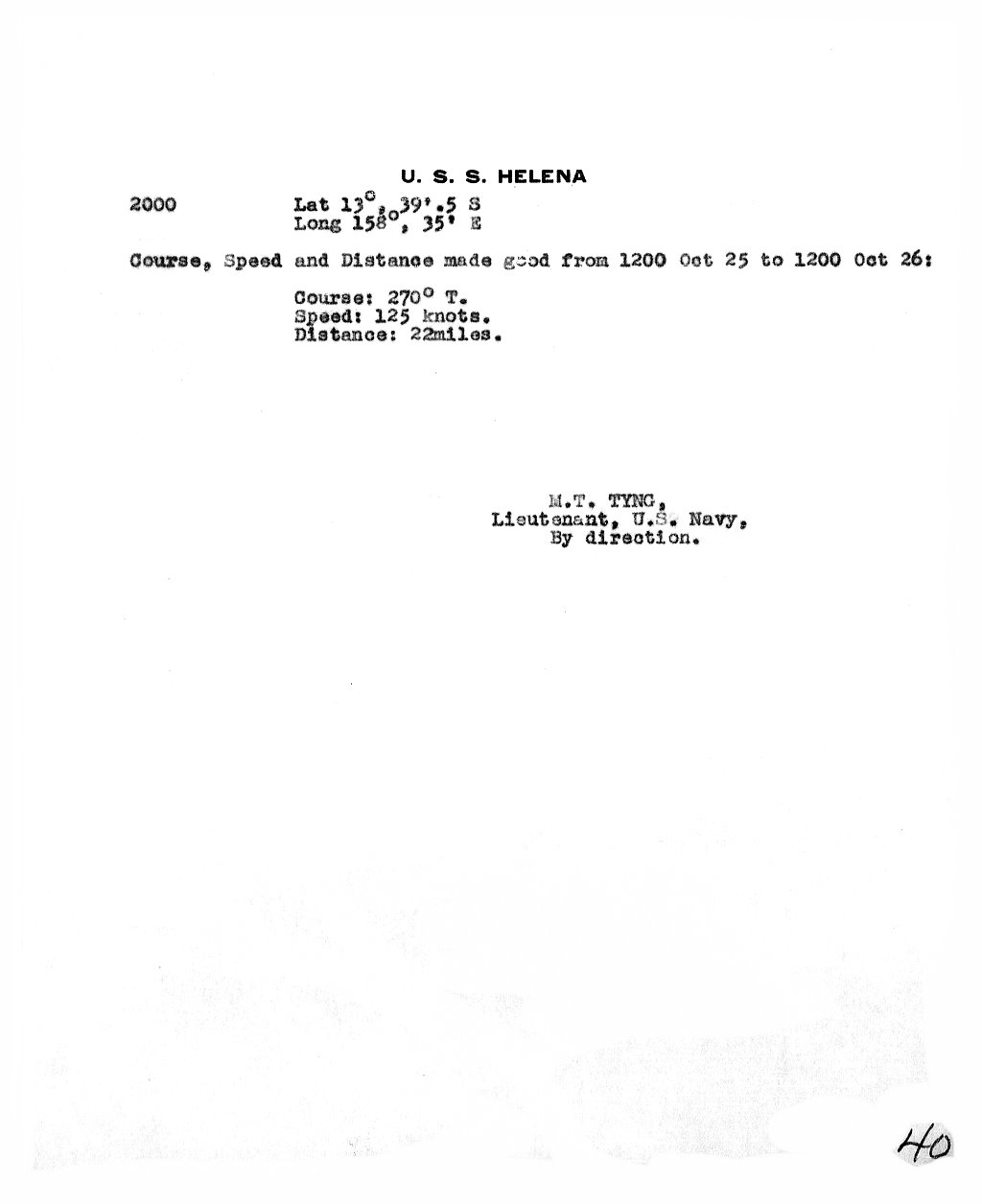
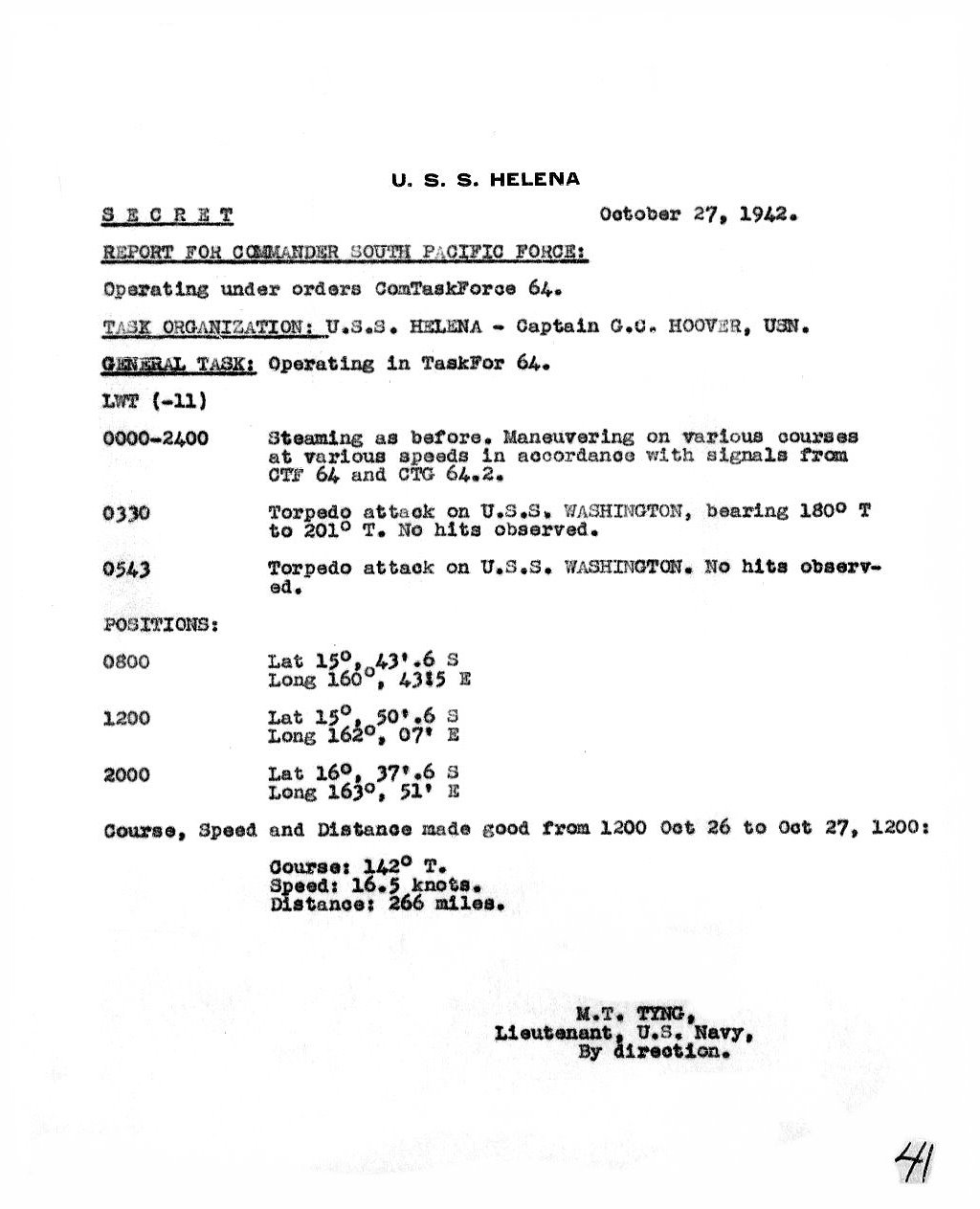
.jpg)
In September, she joined U.S. forces engaged in the Guadalcanal Campaign.
On 14-15 November 1942, she was flagship of Rear Admiral Willis A. Lee in the last part of the Naval Battle of Guadalcanal.
During that night action, her sixteen-inch guns fatally damaged the Japanese battleship Kirishima.
was the third ship of the United States Navy named in honor of the 42nd state.
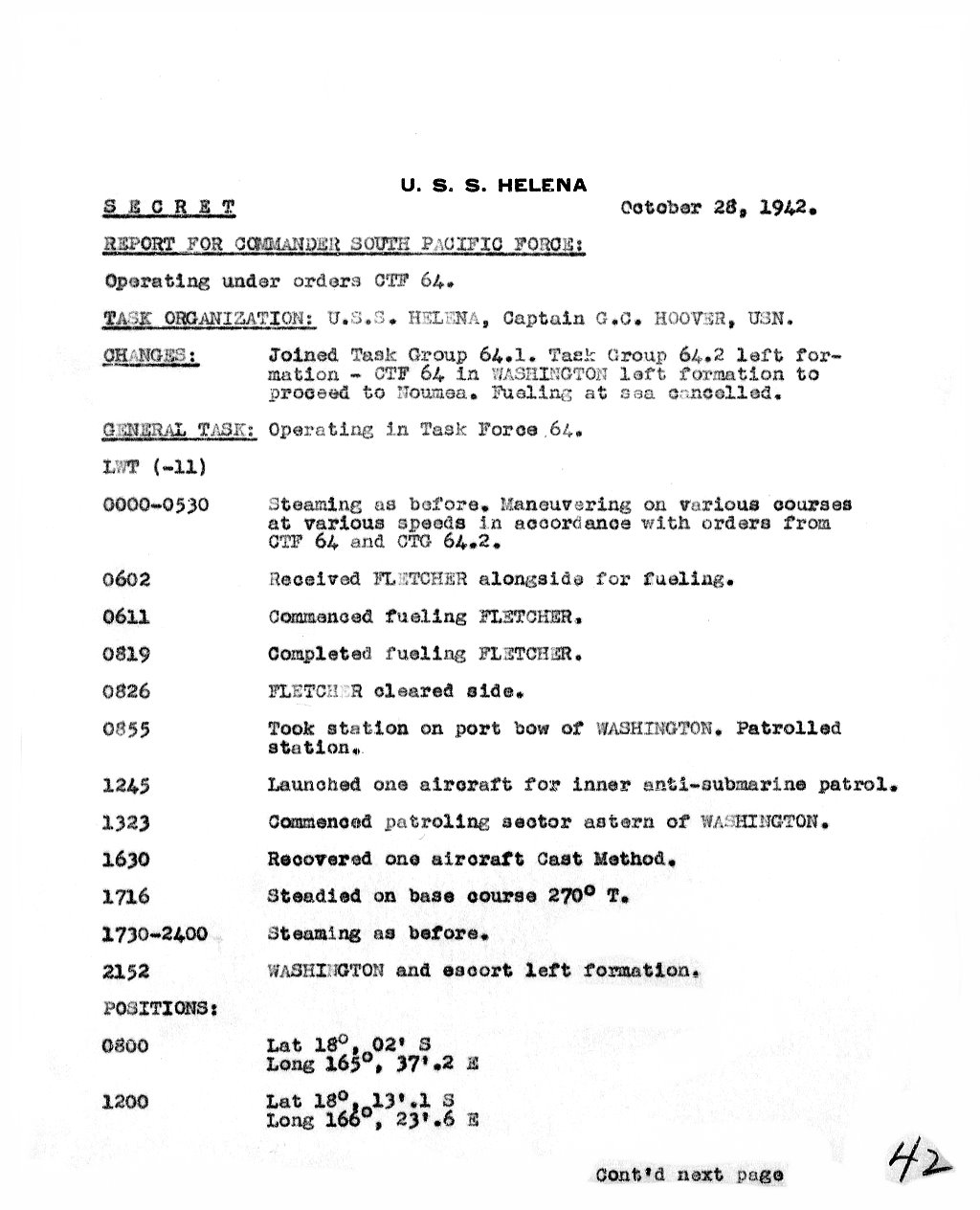
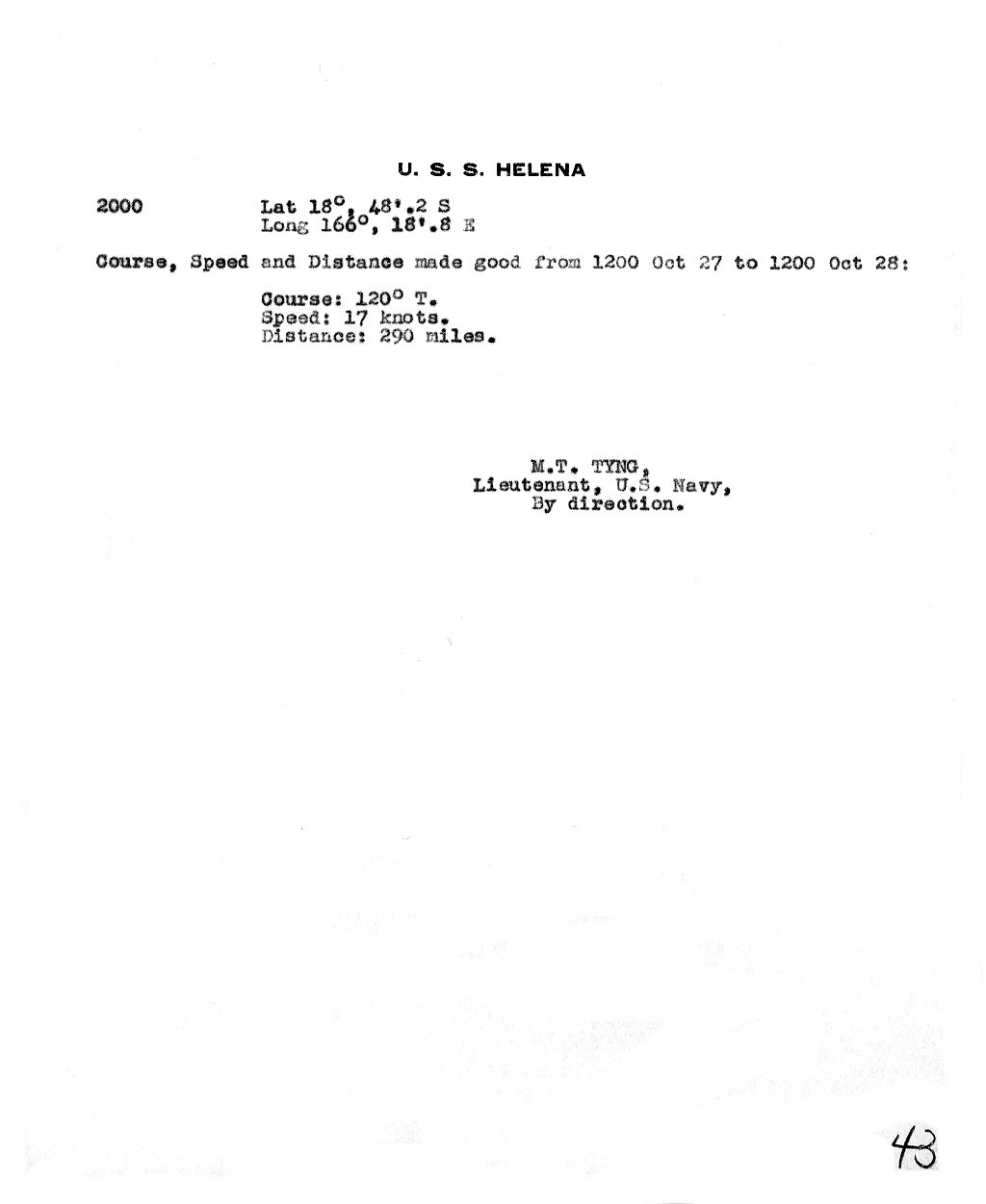
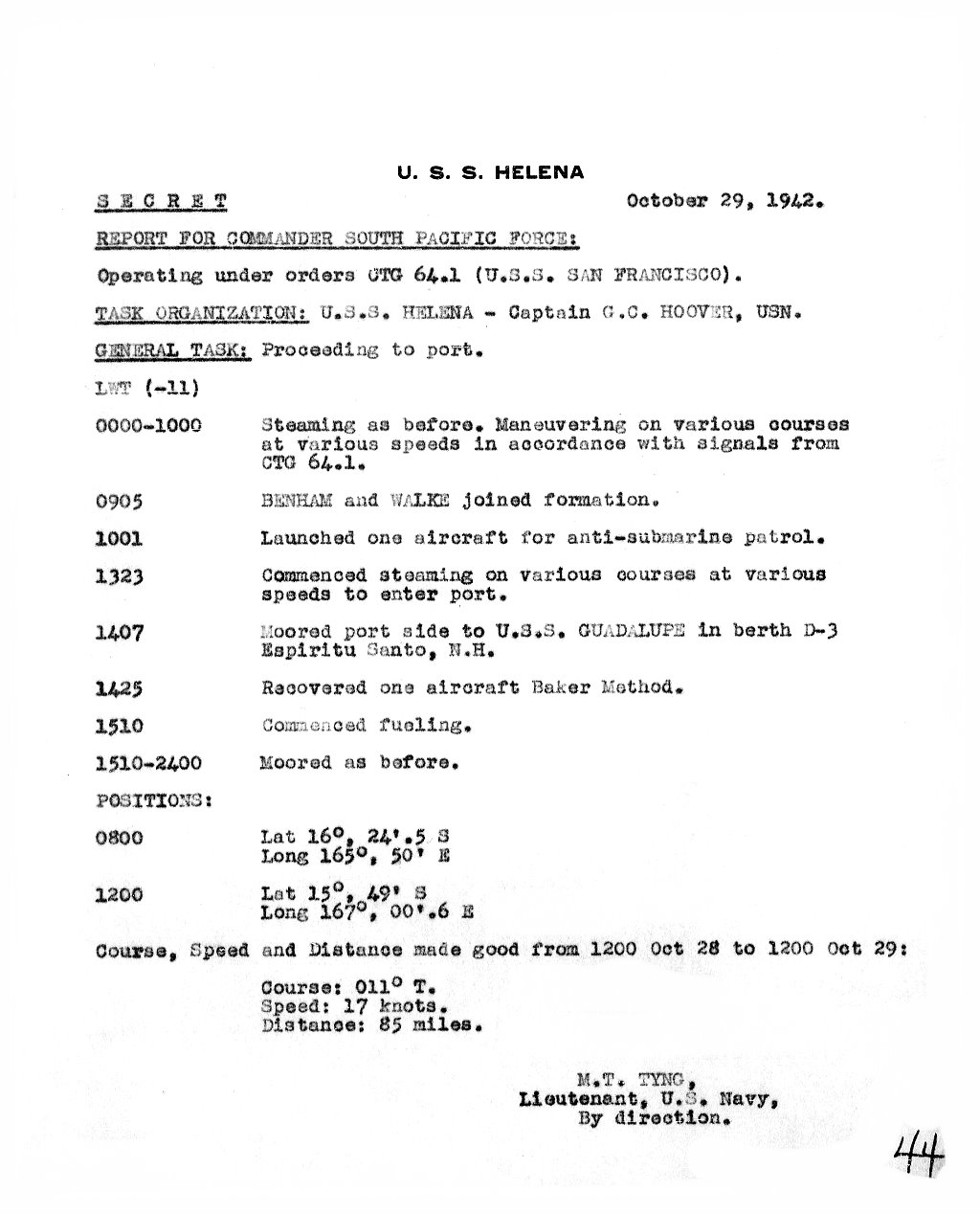
.jpg)
USS Guadalupe (AO-32)
Pictured in 1967
Guadalupe sailed south to spend the final four months of 1942 fueling warships operating in and around Guadalcanal.
A Cimarron-class fleet replenishment oiler that served in the United States Navy,
it was named for the Guadalupe River in Texas.
.jpg)
USS Benham (DD-397)
On the night of 14-15 November 1942, Rear Admiral Willis A. Lee Lee led his force of
two battleships and four destroyers into the narrow waters immediately north of
Guadalcanal, on a mission to prevent a Japanese bombardment of the U.S. airfields there.
Benham was one of the destroyers, and in the resulting second major surface action of the
Naval Battle of Guadalcanal, she was hit in the bow by a torpedo.
The "whipping" effect of this blow severely weakened her midships hull structure, and the next day
the destroyer began to break up while withdrawing from the combat area. Her crew was taken off
by USS Gwin, and Benham was then scuttled by gunfire.
USS Benham was named in honor of Rear Admiral Andrew E.K. Benham, USN, (1832-1905).
.jpg)
USS Walke (DD-416).
Following an overhaul, Walke returned to the south Pacific in September 1942 to support the ongoing Guadalcanal Campaign.
Following two months of escort duties, she was attached to Rear Admiral Willis A. Lee's battleship task force and sent on a mission
to stop the Japanese from bombarding the U.S. airfield on Guadalcanal. In the resulting second major surface action of the
Naval Battle of Guadalcanal, on 15 November 1942, USS Walke was sunk by Japanese torpedoes and gunfire,
with the loss of more than a third of her crew.
an important figure in the Civil War's Western Rivers campaigns.
